
Short video on spinal cord anatomy for anatomy and physiology.
- Subject:
- Anatomy/Physiology
- Applied Science
- Health, Medicine and Nursing
- Life Science
- Material Type:
- Activity/Lab
- Author:
- Dr. Bruce Forciea
- Date Added:
- 04/05/2018

Short video on spinal cord anatomy for anatomy and physiology.
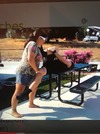
Different Types of StretchesStaticDynamicPNFLower Extremity StretchesHamstringGroinGlutePiriformisIlliotibial BandHip FlexorRectus FemorisQuadButterflyVictory StretchUpper Extremity StretchesWarm up AbductionCross BodyOverheadIR (forward flexion & scaption)Chicken WingSerratusBicepRhombiod All fours

Use this resource to support student personal reflection, community building, and mental health. Online and in-person courses can use this resource.
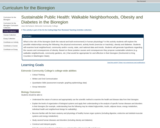
Students generate hypothesis regarding the causes and consequences of obesity. Based on these putative causes and consequences they propose sustainable solutions (e.g. walkable neighborhoods, community gardens, etc.) that would be appropriate for and effective in their bioregion.
(Note: this resource was added to OER Commons as part of a batch upload of over 2,200 records. If you notice an issue with the quality of the metadata, please let us know by using the 'report' button and we will flag it for consideration.)
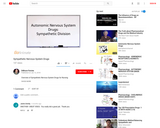
Short video covering common sympathetic nervous system drugs.

This asynchronous activity addresses the common theme of TORCH infections covered in maternal newborn nursing courses and the NCLEX exam.

Nebraska Public Media and PBS have curated FREE, curriculum-aligned videos, interactives, lesson plans, and more for teachers like you.
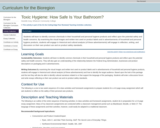
Students learn about potential safety and health concerns of personal hygiene products. Students examine labels and advertisements of these projects and then engage in rhetorical and cultural analysis of these advertisements.
(Note: this resource was added to OER Commons as part of a batch upload of over 2,200 records. If you notice an issue with the quality of the metadata, please let us know by using the 'report' button and we will flag it for consideration.)

An interactive reference work on the UN Sustainable Development Goals with short introductions to the goals, the official translations and numbering of the 17 goals and the 169 underlying targets, zoom in / zoom out at goal or target level, powerful search function, and "deep" hyperlinks to the UN website about the goals.Compact and online available interactive reference work that can be useful in all kinds of learning activities related to the SDGs.Currently available in English, Spanish, French and Dutch.Free to use online, but also to download and "embed" in other websites (HTML5); the source code is also freely available (MMAP).

Armed with an overview of the complexity of issues associated with global food security, this unit begins by contextualizing food security as an example of a wicked problem. Wicked problems are problems that are unsolvable in the traditional sense, and have complex multiscalar causal factors that contribute to the creation of new issues as old ones are addressed. Both global food security and climate change are examples of wicked problems. This unit presents systems thinking as a way to identify complex problems and explore solutions. Using a flipped classroom model, students complete a self study tutorial that presents system concepts in the context of Earth system science. The slide stack includes two guided activities related to the carbon cycle and soils. A short reading, "Why Systems Thinking?" and a video clip is included in the tutorial. Authentic assessment of the homework activity is an Earth system diagram connected to one of the issues of global food security from Unit 1 that they will bring to class. After a short class discussion that introduces concepts of sustainability and ecosystem services as related to food production, students are broken into groups and are asked to create their own systems diagram of the global food system, using the organizational systems concepts they examined as homework and the introduction activities of Unit 1. After completing the diagrams, students examine a food system diagram example, and identify the components of the system using standardized systems language. Students can photograph their diagrams or make quick sketches so they have a working copy to include with their notes.
(Note: this resource was added to OER Commons as part of a batch upload of over 2,200 records. If you notice an issue with the quality of the metadata, please let us know by using the 'report' button and we will flag it for consideration.)

In the capstone, Unit 3, students are provided a real-world example of local community action to address the challenge of "healthy food access." The 2015 Leon County (Florida) Sustainable Communities Summit highlights the results of communities working together to promote environmental and food justice. By the end of Unit 3, instructors can deliver a call to action to empower students to be participatory citizens in their communities. The summative assessment will evaluate the students' ability to synthesize the module learning objectives and demonstrate the use of science practices.
(Note: this resource was added to OER Commons as part of a batch upload of over 2,200 records. If you notice an issue with the quality of the metadata, please let us know by using the 'report' button and we will flag it for consideration.)
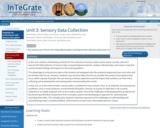
In this unit, students will develop protocols for the collection of sensory data (scents and/or sounds), plan and execute the field collection of sensory data using developed protocols, analyze collected data, and create a map that communicates findings and impacts on the local population.
The advantage of using sensory data is that students are equipped with the analytical equipment (ears and nose) and are familiar with its use. However, students may not have taken the time to consider the variety of perceptions that occur within a group of people who are sharing a sensory experience and the impact that variation can have when collecting and analyzing data and subsequently communicating the results.
In this unit, as in the entire module, sensory data is considered in two contexts: First, as an indicator of environmental conditions, and, in some instances, environmental disruption. Second, as a proxy for data that is not as easily collected or as readily analyzed such as air or water samples. One of the challenges of developing these protocols will be discerning individual components from a complex system and developing an approach for systematically recording these data. This, though, gives students important exposure to the challenges of understanding and characterizing today's societal problems, which tend to include many interrelated dynamic causes.
(Note: this resource was added to OER Commons as part of a batch upload of over 2,200 records. If you notice an issue with the quality of the metadata, please let us know by using the 'report' button and we will flag it for consideration.)
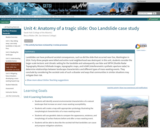
Landslides can have profound societal consequences, such as did the slide that occurred near Oso, Washington in 2014. Forty-three people were killed and entire rural neighborhood was destroyed. In this unit, students consider the larger-scale tectonic and climatic setting for the landslide and subsequently use lidar and SRTM (Shuttle Radar Topography Mission) hillshade images, topographic maps, and InSAR (interferometric synthetic aperture radar) to determine relationships between landscape characteristics and different types of mass-wasting events. They conclude by considering the societal costs of such a disaster and ways that communities in similar situations may mitigate their risk.
Show more about Online Teaching suggestions
Hide
Online-adaptable: The exercises in unit are completely digital and thus at a logistical level it can be switched to online fairly easily. However, due to the relative complexity of the data investigations and group discussions, there will still be a fair bit of instructor support needed and/or extended small group that should be arranged.
(Note: this resource was added to OER Commons as part of a batch upload of over 2,200 records. If you notice an issue with the quality of the metadata, please let us know by using the 'report' button and we will flag it for consideration.)
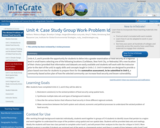
Units 4, 5, and 6 provide the opportunity for students to delve into a greater examination of food security at a regional level in small teams selecting one of the following locations (Caribbean, New York City, or Nebraska) OR a new location of their choice (provided that information and datasets are easily available and students will work with the instructor prior to the start of the unit) to apply skills and concepts taught in Units 1-3. Unit 4 materials are designed to provide a place-based overview for students to prepare them for the summative assessment, to be submitted in Unit 6, a community-based action plan of how the selected community can increase food security and lessen vulnerability.
(Note: this resource was added to OER Commons as part of a batch upload of over 2,200 records. If you notice an issue with the quality of the metadata, please let us know by using the 'report' button and we will flag it for consideration.)
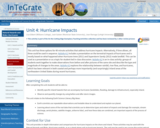
This unit has three options for 40-minute activities that address hurricane impacts. Alternatively, if time allows, all three could be used in sequence. Activity 4.1 includes a presentation on the terrestrial impacts of hurricanes and is mostly based on what happened when Hurricane Irene (2011) and Superstorm Sandy (2012) made landfall. This can be used as a presentation or as a topic for student-led in-class discussion. Activity 4.2 is an in-class activity: groups of students work together to make observations from before and after pictures of the same site and describe the type and magnitude of changes to the areas. Activity 4.3 explores the relationship between rainfall, river flow, and hurricanes, which has been relevant in both coastal and perhaps more importantly (and surprisingly) inland areas of the northeastern United States during recent hurricanes.
(Note: this resource was added to OER Commons as part of a batch upload of over 2,200 records. If you notice an issue with the quality of the metadata, please let us know by using the 'report' button and we will flag it for consideration.)
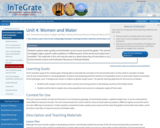
Students explore water quality and freshwater access issues around the globe. The activities require students to investigate region-specific water problems in different parts of the world and analyze how those issues are sometimes remedied. The materials in this unit may be used as a stand-alone day of instruction or as part of the complete Environmental Justice and Freshwater Resources InTeGrate Module.
(Note: this resource was added to OER Commons as part of a batch upload of over 2,200 records. If you notice an issue with the quality of the metadata, please let us know by using the 'report' button and we will flag it for consideration.)
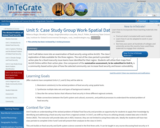
Unit 5 will delve more into an examination of food security using online ArcGIS. The class begins with a GIS-based exploration of data available for the three regions. The rest of the class period is provided for group work creating an action plan for a food insecurity issue teams have identified for their region. Students will utilize their maps from ArcGIS Online within their action plan. One component of the summative assessment, to be submitted in Unit 6, is a community-based action plan of how the selected community can increase food security and lessen vulnerability.
(Note: this resource was added to OER Commons as part of a batch upload of over 2,200 records. If you notice an issue with the quality of the metadata, please let us know by using the 'report' button and we will flag it for consideration.)

Students explore the classic case of Love Canal, New York, in which Lois Gibbs -- originally described as a "hysterical housewife" -- mobilized her community and called attention to the contamination of groundwater by buried hazardous waste and the resulting impact on the health of local residents. The activities require the students to investigate the history of events at Love Canal. The materials in this unit may be used as a stand-alone day of instruction or as part of the complete Environmental Justice and Freshwater Resources InTeGrate Module.
(Note: this resource was added to OER Commons as part of a batch upload of over 2,200 records. If you notice an issue with the quality of the metadata, please let us know by using the 'report' button and we will flag it for consideration.)
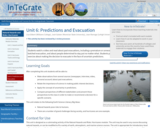
Students watch a video and read about past evacuations, including a premature or unnecessary evacuation, a late or botched evacuation, and about people determined to stay put no matter what. Students participate in a role-playing exercise about making the decision to evacuate in the face of uncertain predictions.
(Note: this resource was added to OER Commons as part of a batch upload of over 2,200 records. If you notice an issue with the quality of the metadata, please let us know by using the 'report' button and we will flag it for consideration.)

Short video on urinary system anatomy for anatomy and physiology.